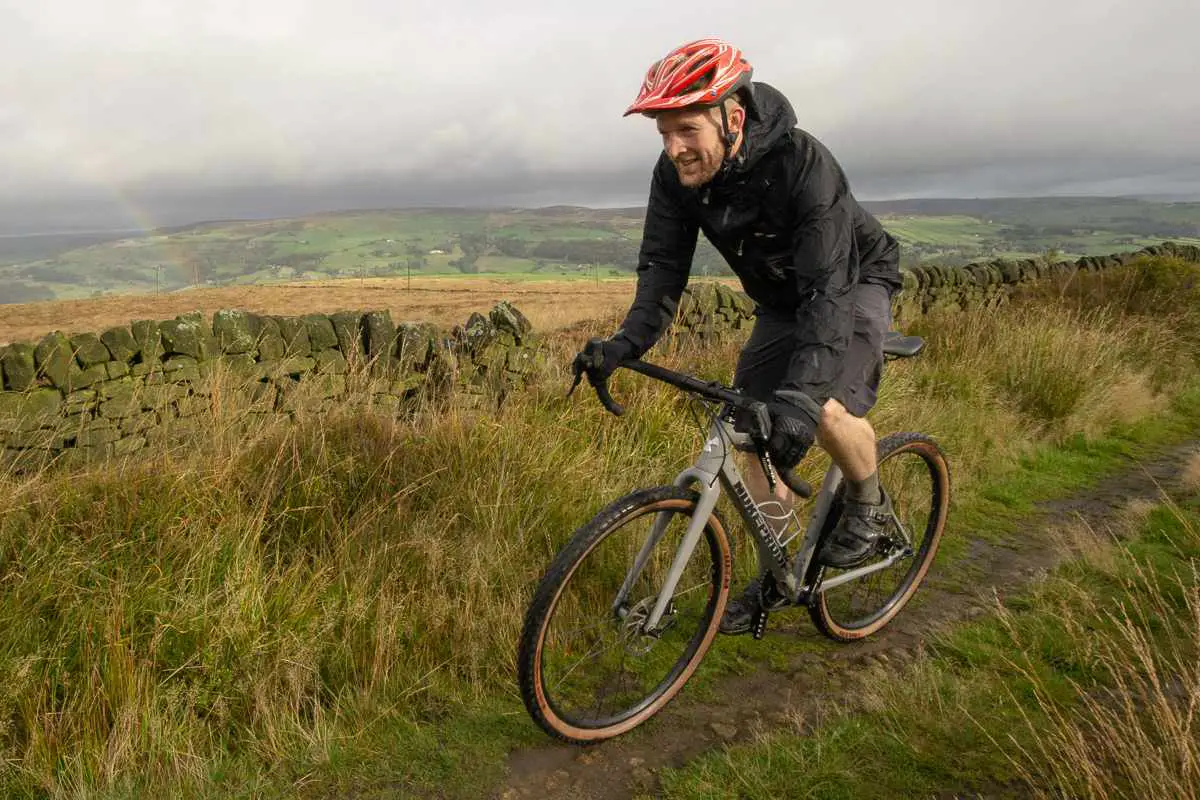Nukeproof is a name that a lot of you will recognise from the mountain bike world, where the company has a high profile on the DH scene, and its Mega series of bikes are a popular choice for privateer Enduro racers. So when a brand that normally focuses on the more extreme end of mountain biking produces a gravel bike, what does it look like? And more importantly, how does it ride?

The answer, as you might expect, is a machine that looks a bit more muscular than your usual skinny-tyred mile-muncher. In recent years we’ve seen a blurring of the lines between cyclocross bikes and MTBs. We’ve had disc brakes, bolt-through axles, 1x drivetrains and tyres also have grown by several shoe sizes, partly thanks to the mainstreaming of 650b wheels. There are even some bikes like the Cannondale Slate which mix things up even more by adding front suspension. The Digger doesn’t go quite that far, but it still seems to be aimed firmly at a rider who would rather walk up a mountain in stilettoes than take to their local trails on 32mm tyres.
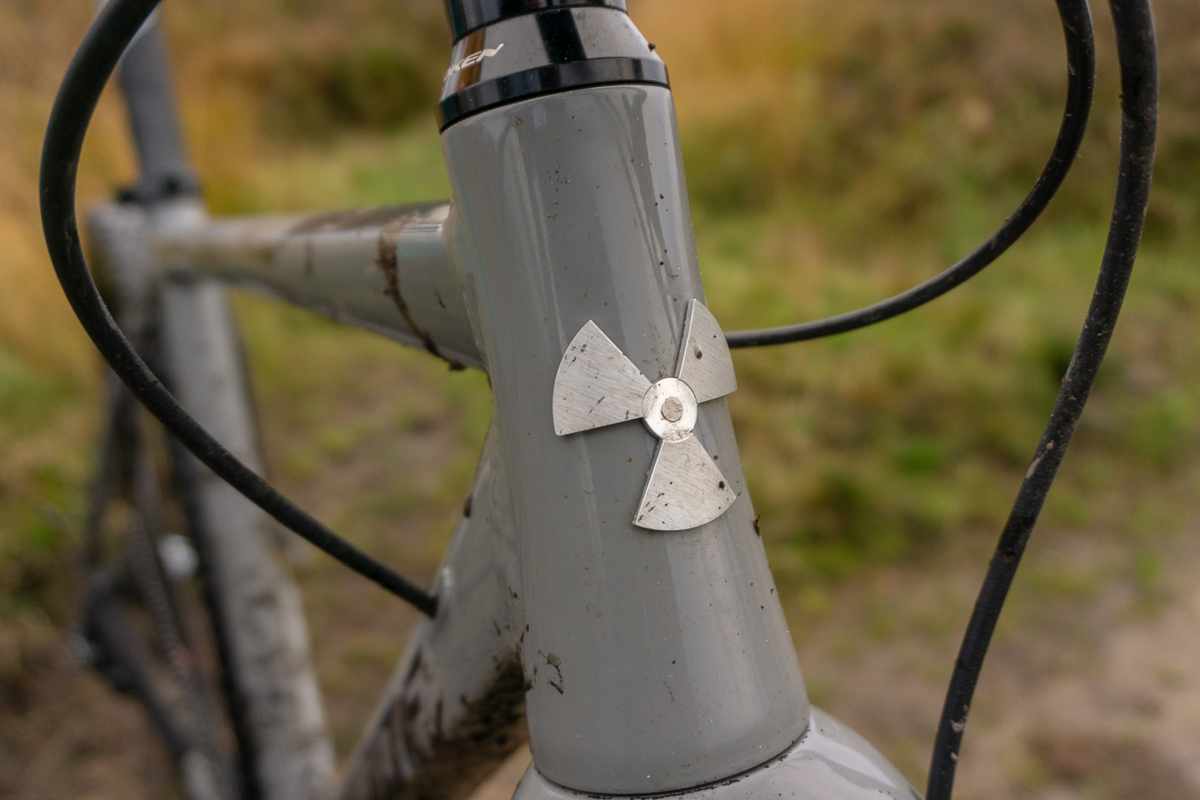
The bike
The Digger is built around a fairly conventional-looking alloy frame, albeit one that’s very nicely finished. The front triangle is chunky, and the seat tube is sized to accommodate a dropper post (complete with internal routing), but the back end of the bike has laterally flattened seatstays which promise a bit of ride comfort.
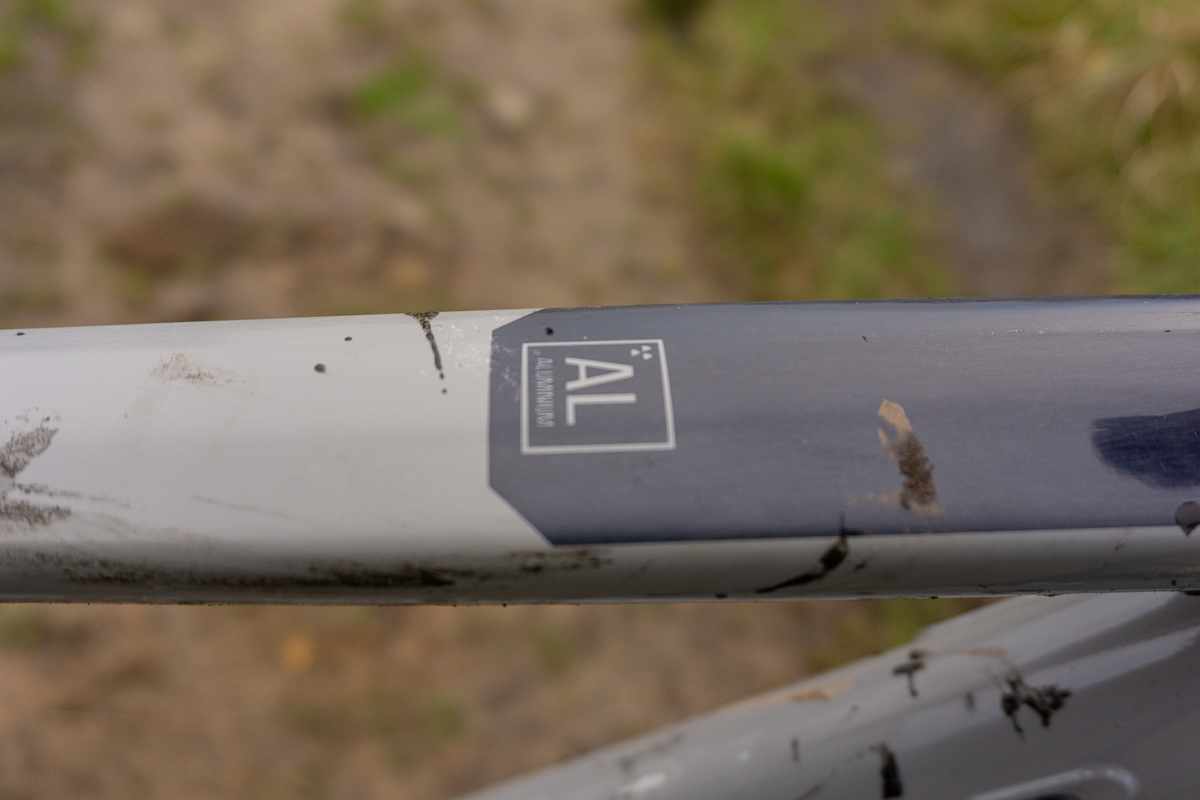
The clean lines belie the fact that it’ll happily do winter hack duty thanks to concealed rack and mudguard mounts. It also features a removable chainstay bridge for better mud clearance when you aren’t running guards – a neat idea, although I can also imagine it getting lost in the various boxes of spare parts in the shed.
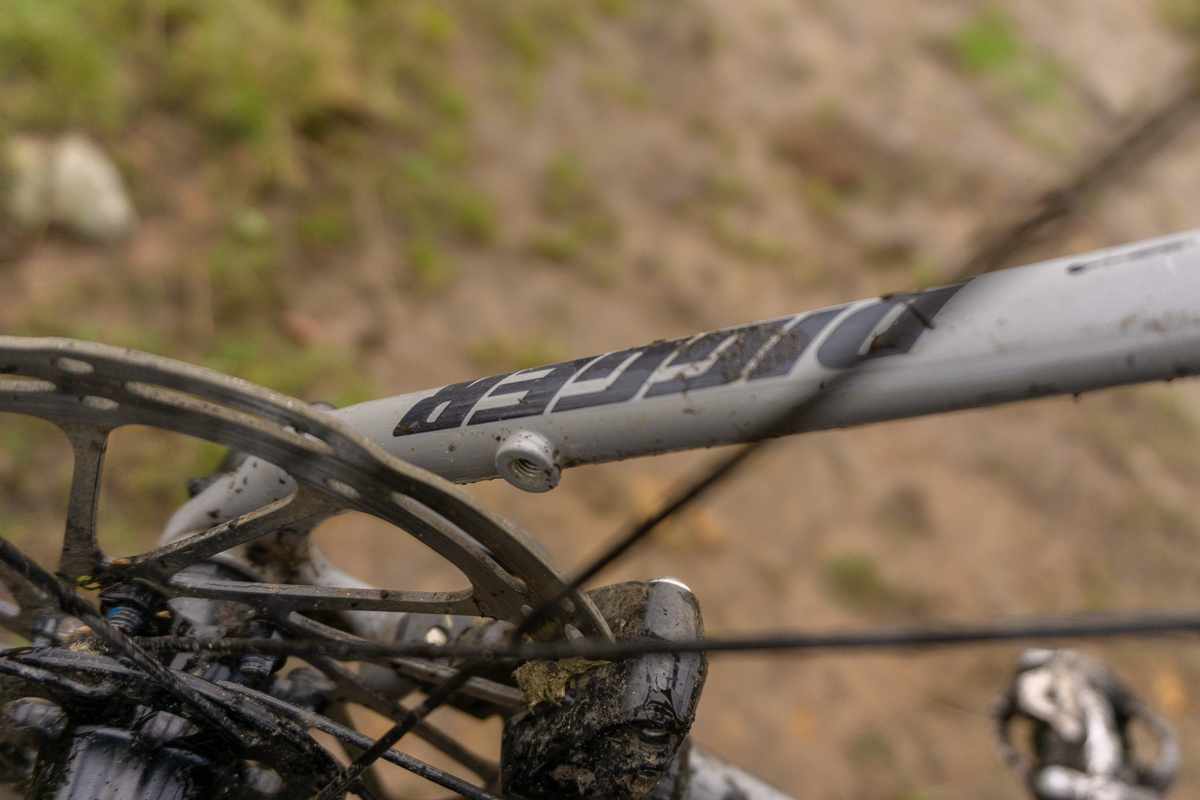
The frame gets a full carbon fork together with front and rear thru-axles. Its BB shell is a good old threaded 68mm job rather than a pressfit,. The rear dropouts are 15 x 142mm, which means you can drop in your spare MTB wheels as long as they’re older non-Boost ones.

Geometry is pretty conventional for a gravel bike, with a 71 degree head angle and 74 degree seat angle. However a sloping top tube and short seat tube give the frame a very compact shape. When it arrived in its box disassembled, more than one of the office staff reckoned I’d been sent a small frame to test. This impression was dispelled immediately once the bars were fitted. At 500mm across the tops, with a slight flare for good measure, they’re some of the widest I’ve ridden.
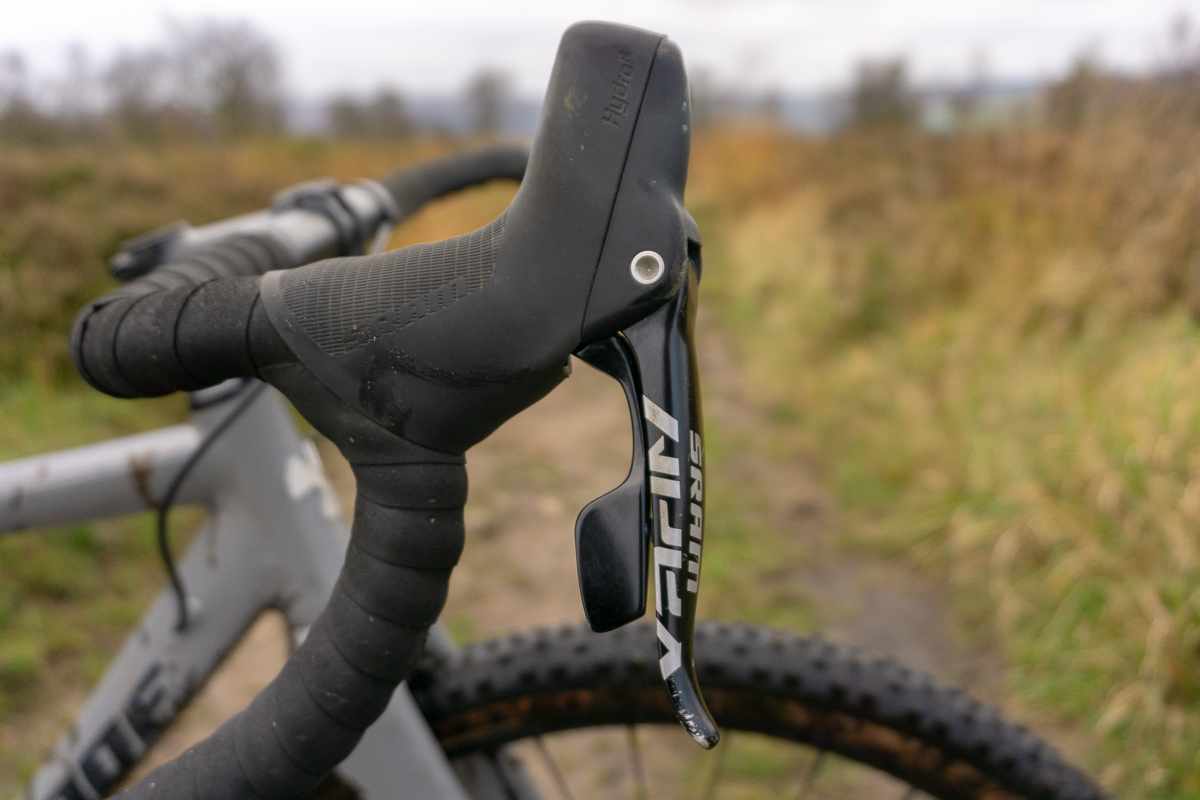
Ticking yet another box on the MTB crossover list, the Digger gets a hydraulic disc brake SRAM Apex groupset with an 11-speed single-ring drivetrain. 160mm disc rotors front and rear give a touch of extra stopping power, and there’s an 11-42T cassette for a decently low bottom gear.
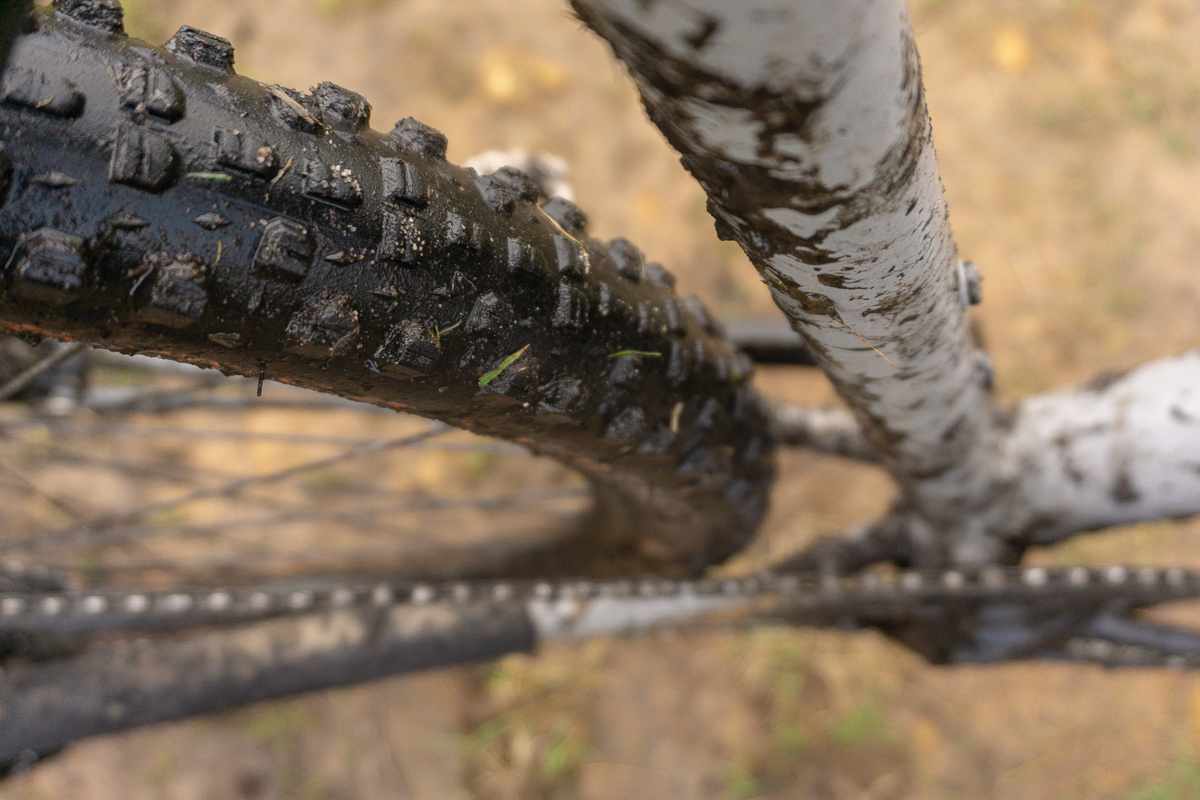
The wheels roll on some Nukeproof-branded cartridge bearing hubs laced to WTB ST i23 tubeless-compatible rims. And let’s not forget the tyres – 47c WTB Senderos are the company’s most aggressive gravel tyre yet, with a knobbly pattern that wouldn’t be out of place on a mountain bike. They’re also tubeless-ready and boast glorious tan sidewalls.
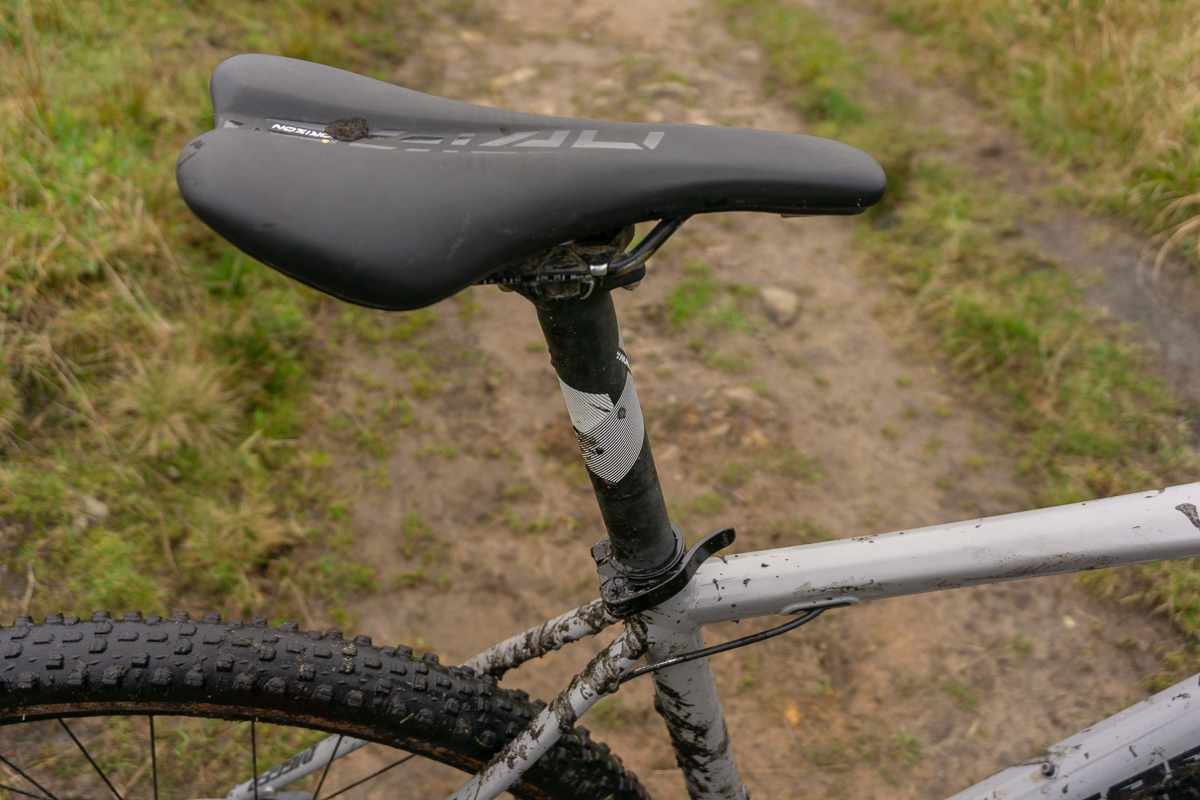
The build is finished off with a range of own-brand kit from Hotlines, including a smart-looking Nukeproof Horizon saddle and seatpost, an unbranded stem, and an unbranded QR seatclamp (of which more later).
A rowdy ride?
Some drop bar bikes feel like they’re made to cover the miles, but as soon as you get them onto mildly challenging terrain, you’re forced to wind it in and pick your way through. The Digger is not one of those bikes. With great grip from the wide tyres, masses of control from those huge bars, and a compact frame that’s easy to shift around on, it demands to be hooned.

Thanks to the one-finger-friendly hydraulic brakes you can get away with riding techy stuff on the hoods or the drops. The low BB height adds to the stability and cornering, and it’s nice to see that Nukeproof have specced 170mm cranks to help minimise pedal clattering. SRAM’s single lever gear actuation takes very little getting used to, and helps give the brake levers a more positive feel.
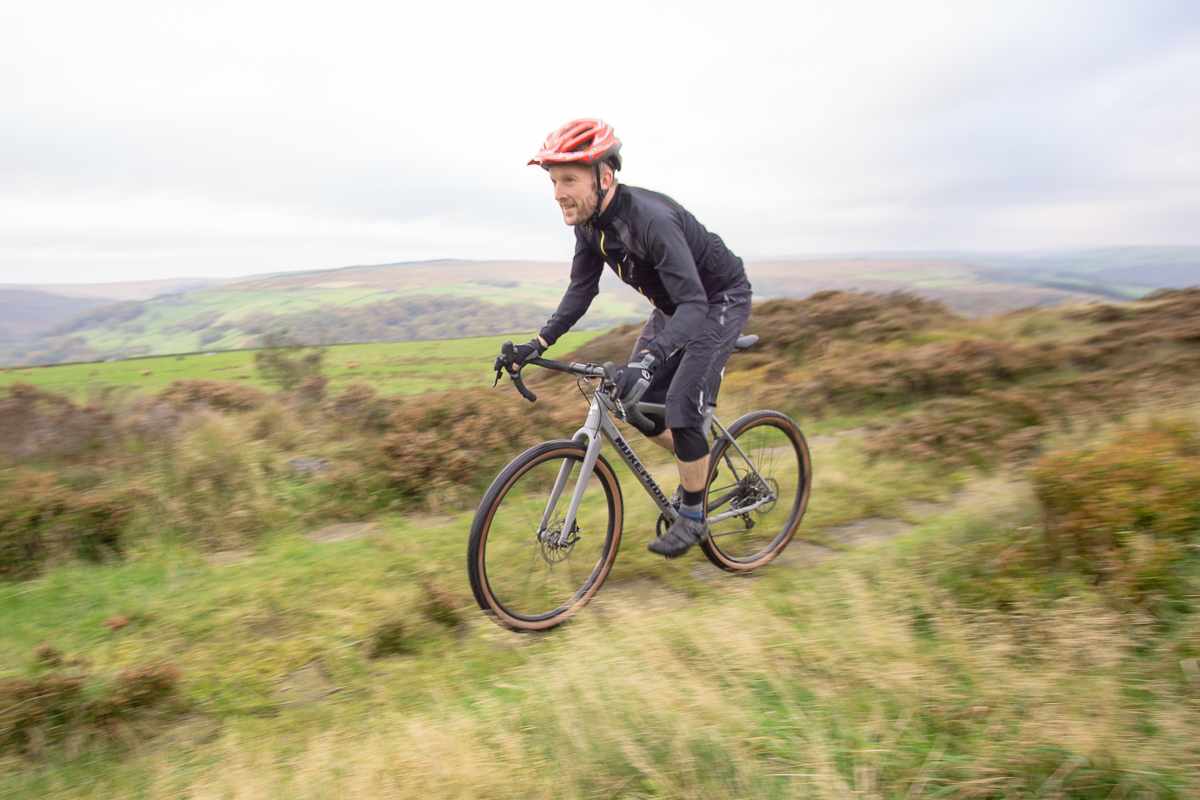
Although it’s not designed as a mile-muncher, longer rides on the Digger are also perfectly pleasant. The frame is stiff, particularly with a 31.6 seatpost standing in for a dropper post, but the compact size and comfortable, open riding position made it less of an issue than it could have been for me. You can also get away with less air in the wide tyres, which only helps make the ride more comfortable. At 12 stone I was running pressures in the low 30s for most of the test. The WTB Senderos also roll faster than appearances suggest, and the wide bars are only an issue when you’re slogging directly into a headwind.
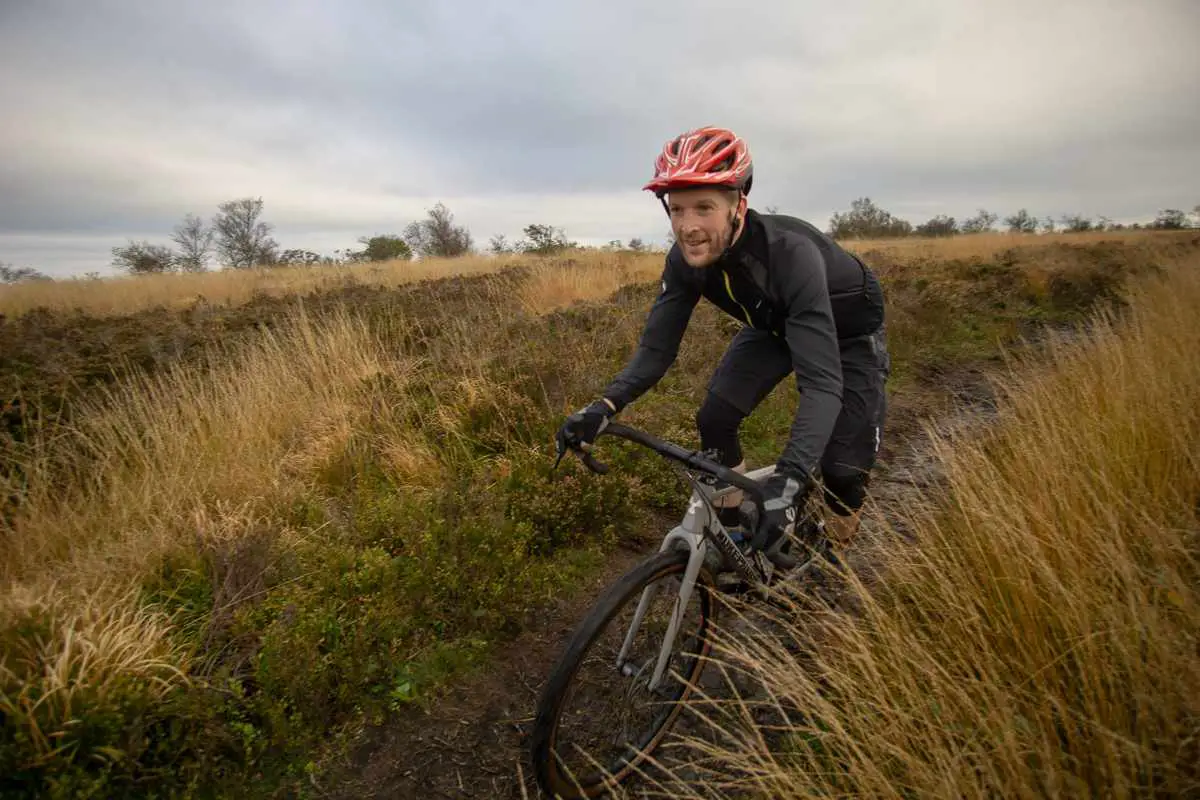
Thanks to a combination of my own slackness and Nukeproof’s patience, I was able to hang on to the Digger for 8 months – a long old time in the world of bike reviewing. I’ve been able to ride it in a variety of competitive events (note how I’m carefully avoiding the term “race” here) and it felt extremely capable, especially on more technical courses. If you’re the sort of rider who loves to have a crack at riding the bits everyone else is walking down, the Digger will have your back. I even managed a decent first attempt at the 3 Peaks Cyclocross on it, until I holed a tyre on the way down Whernside and had to jump on a spare bike.

I suspect it wouldn’t fare so well in a proper CX race. Those huge tyres would feel like a bit of a handful in squelchy mud, and the top tube has an inverted triangular profile which made my right shoulder twitch just looking at it (I ended up carrying off my shoulder or it over my back, hike-a-bike style, for the non-riding sections of the Peaks). Of course you can put 700Cs and 35mm tyres on it, which makes it feel much more like a regular CX bike, but also removes some of the fun factor. In its stock 650b guise, for the sort of events where half the riders are on ‘cross or gravel bikes, half on MTBs, it was pretty much perfect.
Digger niggles
I say “pretty much” because, while I hugely enjoyed my time on it, the Digger also scored a few minus points. One is the wide profile of the rear triangle, which meant my heels quickly wore the paint off a patch of the chainstays. The frame finish is nice but not particularly tough, so you might want to think about applying some protective tape if you’re using it for commuting or adventuring.
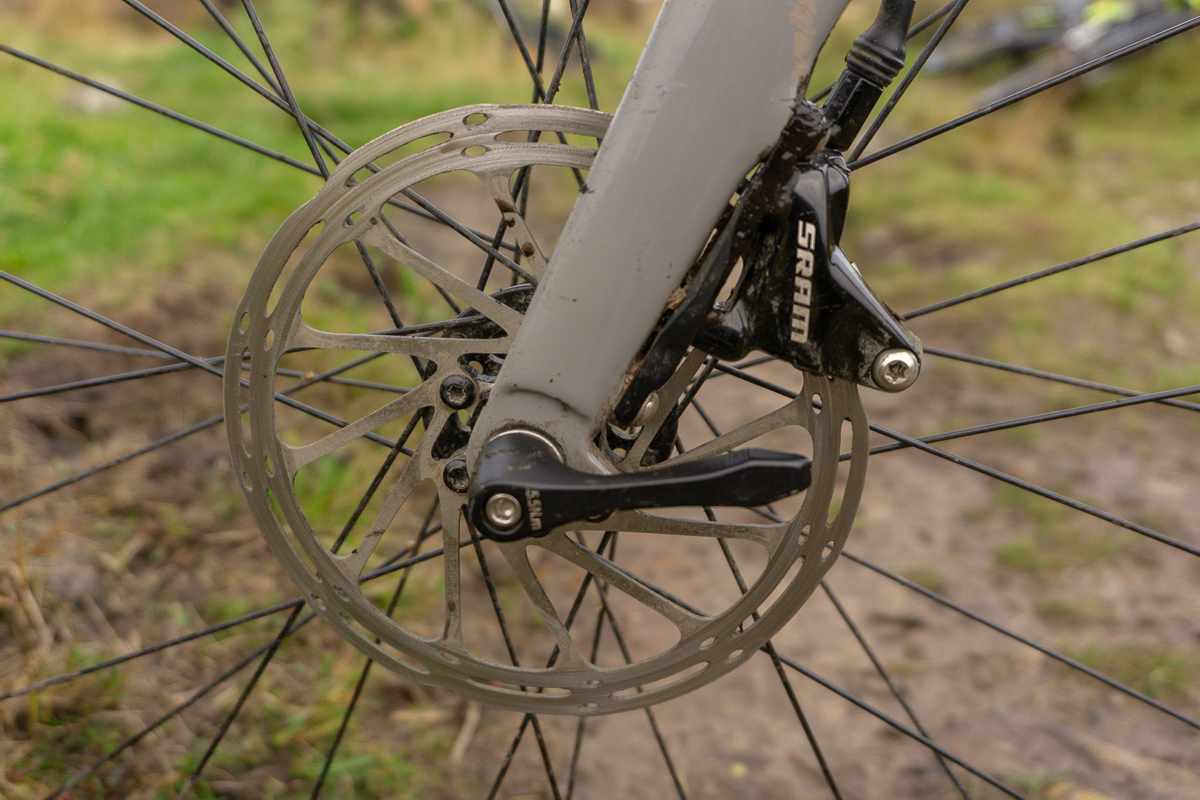
The spec of the Digger Comp also feels like a bit of a compromise in places. I have no problem with own-brand kit for less performance-enhancing parts like headsets and stems, but there are a few other places on the bike where the budget seems to have been squeezed. The PG1130 cassette is probably the cheapest 11-speed model that SRAM make, and thanks to the absence of an alloy spider it adds a fair bit of weight. It also uses a Shimano style freehub rather than an XD driver, which means you don’t get a 10T sprocket and won’t be able to upgrade to a higher spec SRAM cassette.
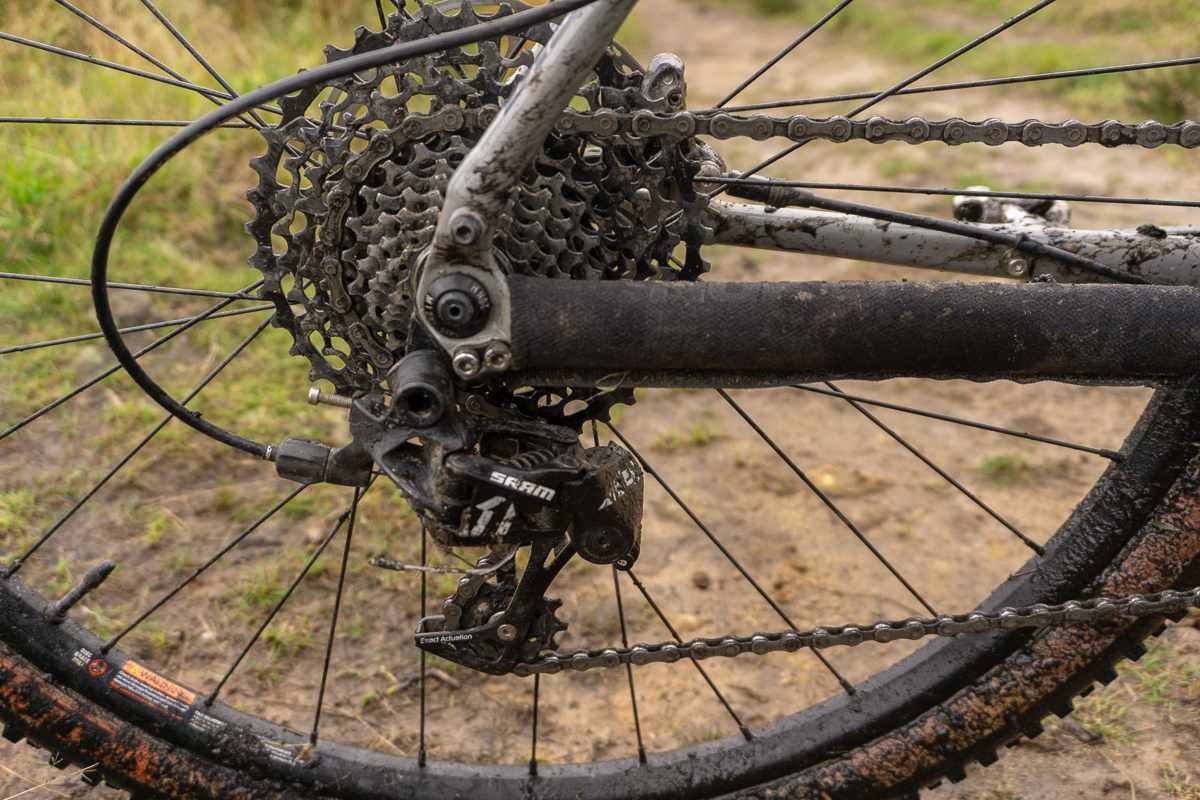
Another weak point of the build was the seatpost, or more specifically the nondescript QR clamp holding it in place. This chose a very annoying mid-race moment to start slipping. A more thorough maintenance regime might have saved my knees, but so might a slightly higher quality clamp (or at least a more reliable bolt-up version). The seat tube also has a rear-facing slot which collected quite a bit of grit, and the nice Nukeproof seatpost is now looking quite scuffed and sad, despite not being lowered that often. On that note, while I can understand why the dropper post has been left off this model, I can’t help but feel slightly bereft – adding one would make it even more of a drop-barred Trojan horse. The Digger Pro does have one, and an upgraded groupset, but is quite a jump up in price.
Overall
The Digger range is currently being updated for 2020, and I’m looking forward to seeing what changes are in store. The 2019 model which I tested here is now mostly sold out, and having spent a decent amount of time aboard this one, I can see why.
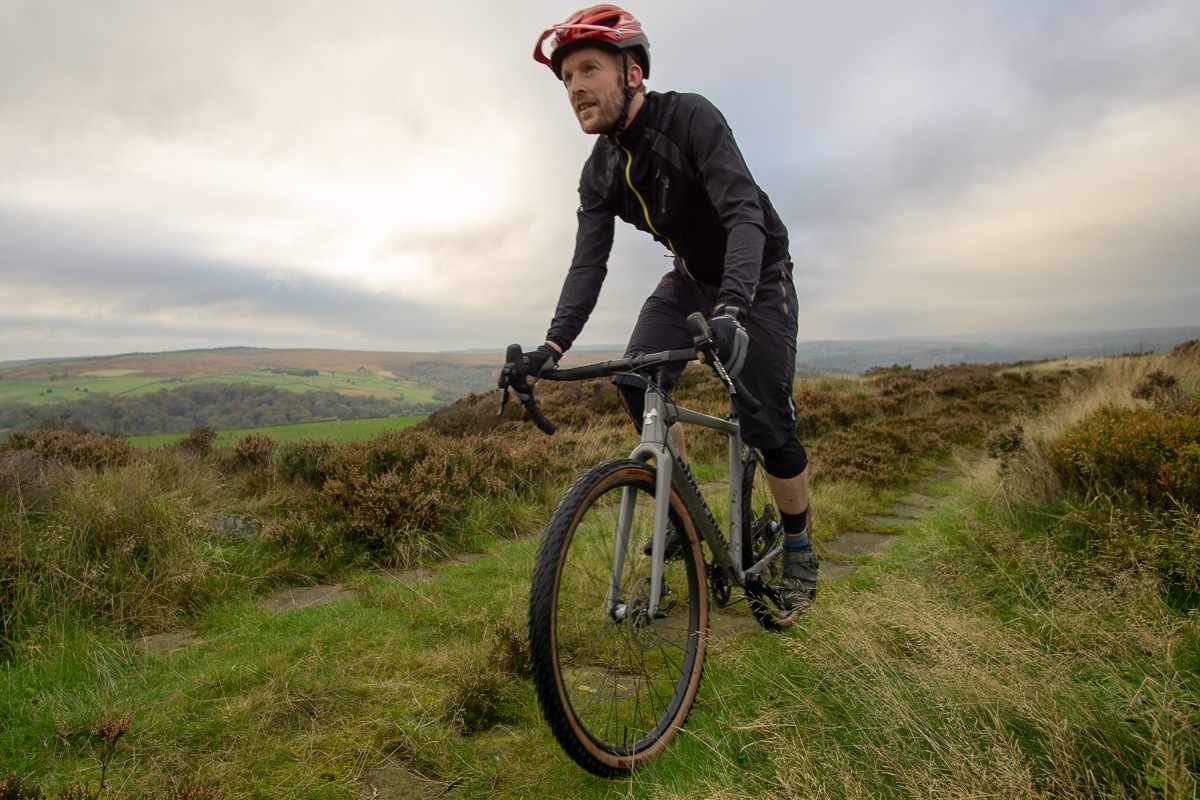
If I was to point to some developments in recent years which have expanded the horizons for gravel bikes, they would be wide tyres and wide handlebars, followed by disc brakes and lower bottom gears. All of these are present and correct on the Digger, but it pushes them a little bit further than the bikes I’m used to riding. The bars give you that extra bit more control, the brakes are a bit more powerful, the tyres have a lot more bite than most of their Road Plus brethren, and thanks to that huge cassette, you can ride it up steeper things.
It’s not a bike you’d take to a grassy local CX race and expect to win on, but then it’s not trying to be that at all. It’s a gravel bike that actually lives up to the hype about being able to ride it on mountain bike trails, yet it still enough has road bike DNA not to make it a trundling liability on smoother stuff. If you want to add some giggles to your gravel, the Digger won’t disappoint.
Nukeproof Digger Comp specification
- Frame // Nukeproof Digger, custom triple butted hydro-formed Alloy
- Fork // Nukeproof Digger carbon, tapered steerer
- Wheels // WTB ST i23 TCS 27.5″ rims, Novatec D791SB-SL hubs
- Tyres // WTB Sendero 650x47C Road Plus, TCS, Light Fast Rolling
- Chainset // SRAM Apex 11-Speed, 170mm, 40T
- Front Mech // N/A
- Rear Mech // SRAM Apex 11-Speed, Long Cage
- Shifters // SRAM Apex Hydro
- Cassette // SRAM 11-42
- Brakes // SRAM Apex Hydro
- Stem // Non Series 6061, 7 Deg, 80mm
- Bars // Non Series AL-6061, 500mm
- Seatpost // Nukeproof Neutron Inline, 31.6mm
- Saddle // Nukeproof Horizon SL
- Size Tested // Medium
- Sizes available // Small, Medium, Large, Extra Large
- Weight // 21.4 lb
- Price // £1,499.00
- From // nukeproof.com

